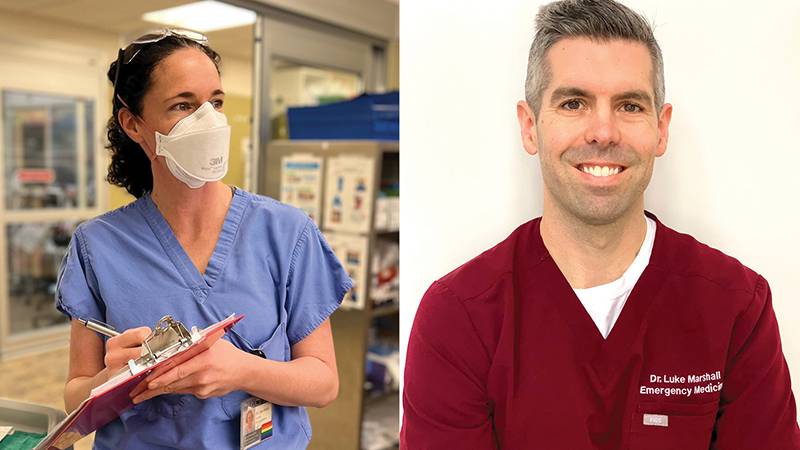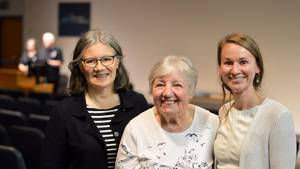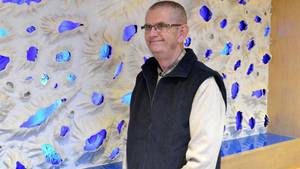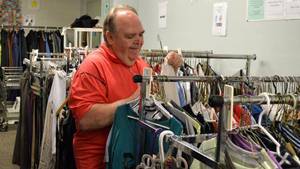Checklists, standard procedures and teamwork go hand-in-hand with the smooth delivery of health care, but the COVID-19 pandemic has put a whole new spin on what it means to stay consistent and work together.
When it became apparent in March 2020 that COVID-19 was infecting Atlantic Canadians, healthcare teams from the QEII Health Sciences Centre and across the province came together with a singular focus in mind — to adapt routine procedures to keep themselves safe and care for those who need it most.
As images of breathless patients being intubated in New York and Italy spread across the globe, Dr. Lorri Beatty’s team zeroed in on the QEII’s standard airway management procedures. It was clear the coronavirus was attacking respiratory systems and that a new danger for emergency and critical care teams had emerged.
“I remember it being a really scary time,” says Dr. Beatty. “We were hearing about hospitals running out of personal protective equipment (PPE) and the volume of patients being intubated everyday was pretty scary. It was at a time when we still didn’t have enough experience to have full confidence that protocols and PPE would protect us.”
With the clock ticking and the need to keep those working on the frontlines healthy, the QEII team moved quickly. Dr. Beatty was appointed to a specialized COVID airway team tasked with training healthcare teams across Nova Scotia, with the primary intent of the protocol being to minimize the spread of the virus.
On March 19, 2020, Dr. Beatty presented the newly developed COVID airway protocol to a packed room at the Colchester East Hants Health Centre. Within a matter of days, the first COVID-positive patient who required intubation presented at the hospital.
Truro emergency physician Dr. Luke Marshall says the standardized protocols and hands-on learning gave the team the confidence they needed to work together in the face of fear and uncertainty.
“Everything was moving pretty quickly, and everybody was pretty nervous,” says Dr. Marshall. “But we took pictures, we wrote things down to make sure we had all the stuff we needed to be able to work safely and follow the new protocols.”
With a highly transmissible virus like COVID-19, intubating patients is a high-risk procedure for healthcare providers and the more interventions required, the higher the chances of being exposed to the virus.
Much like how it’s recommended we wash our hands in a methodical way for a set period, healthcare teams learned, step-by-step — like when to turn off oxygen flows before inserting a breathing tube — what they needed to do every time to stay safe. It was standing room only during the first training sessions. Staff wanted to help, they were craving local information and they wanted to better understand what resources they had access to, says Dr. Beatty.
Training was conducted at healthcare sites across the province, giving physicians, nurses and paramedics opportunities to practise using the new airway tools and procedures both on manikins and, for some, with clinical-grade cadavers. This hands-on practice allowed teams to troubleshoot and disclose their fears.
“We arrived with strong messaging that people need to make sure their safety is priority because if we have an emergency department full of nurses, paramedics, physicians and providers who all become sick with COVID, there will be no one to take care of anybody else,” says Dr. Beatty.
In addition to keeping frontline workers safe, the COVID airway protocol has also improved safety for patients and healthcare teams who, in many cases, proceeded as though any patient needing airway care may be infected with COVID-19.
“With everyone trained, doing the same thing the same way, we can switch people in and out and everyone is more comfortable and familiar with the strategy,” says Dr. Beatty.
The training was a unifying experience that brought together healthcare professionals across roles and specialties. With so many teams embracing the standardized approach, Dr. Beatty also expects to see expanded checklists for additional critical procedures.
“Now that we’ve had clear success with using checklists and protocols for COVID airway patients, I can see this protocolized type of case expanding to other areas of care and resuscitation of critically ill patients in the emergency department.”
While there are three simulation facilities at the QEII to help healthcare learners and practitioners develop and refine their skills in a safe environment, the Truro team’s experience with simulated training sparked a renewed interest in hands-on learning at the hospital. Dr. Marshall is part of a group developing a dedicated simulated training environment at the hospital.
“It’s been a really great time to be doing medicine because of all these initiatives,” he says. “COVID has been really tough and anxiety-provoking and stressful, but I think some good is going to come out of it.”








